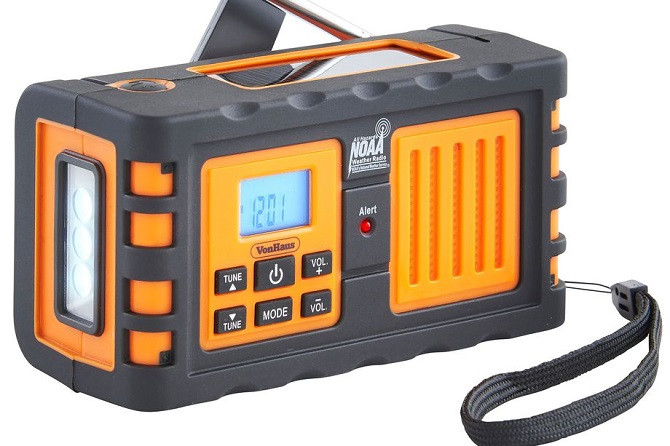Why do Americans still believe in the ability of radio waves to be more mobile?
Radio has always been an indispensable part of the emergency cases whether it is just a regular radio or a weather radio provided by the US Marine and Atmospheric Administration. But in a time when mobile waves bring more features than radio waves, why do people still believe in such an "aging" technology to transmit information in emergency situations?
The simple answer is that radio waves travel farther than LTE signal waves . That makes the radio easier to catch waves and is able to transmit more information, the number one priority in emergencies.
Wave Radio transmits beyond mobile signals
This is easy to understand if you know the principles of radio waves . In theory, the higher the frequency, the more data can be transmitted, the more data can be transmitted, the shorter it can be. Conversely, low-frequency waves transmit less data but go further. Of course, the transmission distance also depends on a number of other factors such as transmit power, antenna height, interference signals .

Weather radio of NOAA.
Looking at the electromagnetic spectrum, traditional radio waves exist at low frequencies: usually between 525 and 1705 Hz for AM or 88 to 108 MHz waves for FM waves (1MHz = 1000 kHz). Therefore, AM radio stations have larger coverage than FM stations because FM stations broadcast at higher frequencies and coverage is often limited to one locality.
Mobile technology - whether 2G, 3G or LTE - operates at even higher frequencies: between 700 MHz and 2100 MHz for modern networks. While mobile networks can help us post on Twitter, upload photos to Instagram, watch movies on Netflix thanks to the ultra-high speed, the transmission signal has a relatively short coverage. This means that a lot of new telecommunications columns need to be covered, equivalent to an area of a radio station. Try to remember how many times the advertising companies see who has the most transceiver stations across the country.
The US Oceanic and Atmospheric Administration (NOAA) uses low frequency radio waves that have the advantage of being able to travel long distances. They broadcast at frequencies between 162,400 and 162,550 MHz. The plus point of this is that the wave will propagate further - the minus point is that conventional radios cannot catch the signal of the Meteorological Station. If you are in danger zone, you will need a NOAA weather radio. The station will broadcast "alerts, situations, forecasts and information about hazards" 24/7. Similarly, Vietnam Meteorological Station and Vietnam Voice Station can transmit information to all people across the country.
Take a look at how the US National Meteorological Station works, you will understand why radio is the best technology to report an emergency. They use 1025 broadcast stations throughout the system to operate in 50 states, coastal waters, Puerto Rico, Virgin Islands and US territory in the Pacific Ocean. It sounds like a lot, but it is actually a tiny amount compared to thousands of broadcast towers in the US - about 100 thousand to 215 thousand, depending on the source and method of calculating a station. Even so, it does not guarantee reliable service for everyone.
In addition, both radio and mobile technology, there is always a bandwidth limit . Mobile towers are used by millions of people to download images, text and call, often only on a single tower. This makes the mobile phone system unreliable. Meanwhile, no one actually transmits the signal on the radio frequency to cause a signal blockage.
So, if you want something to transmit to a lot of people and operate reliably even in the worst situation, radio is the best choice for you.
- Who invented radio?
- For the second time, science has found a source of mysterious radio waves
- Mysterious waves of radio waves outside the universe
- 5G mobile waves can make birds and many living organisms disoriented
- Discover mysterious radio waves 3 billion light years from Earth
- What does the universe look like if you see radio waves?
- Scientists have found the location of the largest beam of radio waves ever discovered in the universe
- AI detects 72 radio signals from the universe
- Mysterious radio signals from the universe
- Aliens are trying to send messages to Earth?
- The mysterious radio signal was identified as originating from the universe
- Discover radio history and radio technology
 'Fine laughs' - Scary and painful torture in ancient times
'Fine laughs' - Scary and painful torture in ancient times The sequence of numbers 142857 of the Egyptian pyramids is known as the strangest number in the world - Why?
The sequence of numbers 142857 of the Egyptian pyramids is known as the strangest number in the world - Why? History of the iron
History of the iron What is alum?
What is alum?